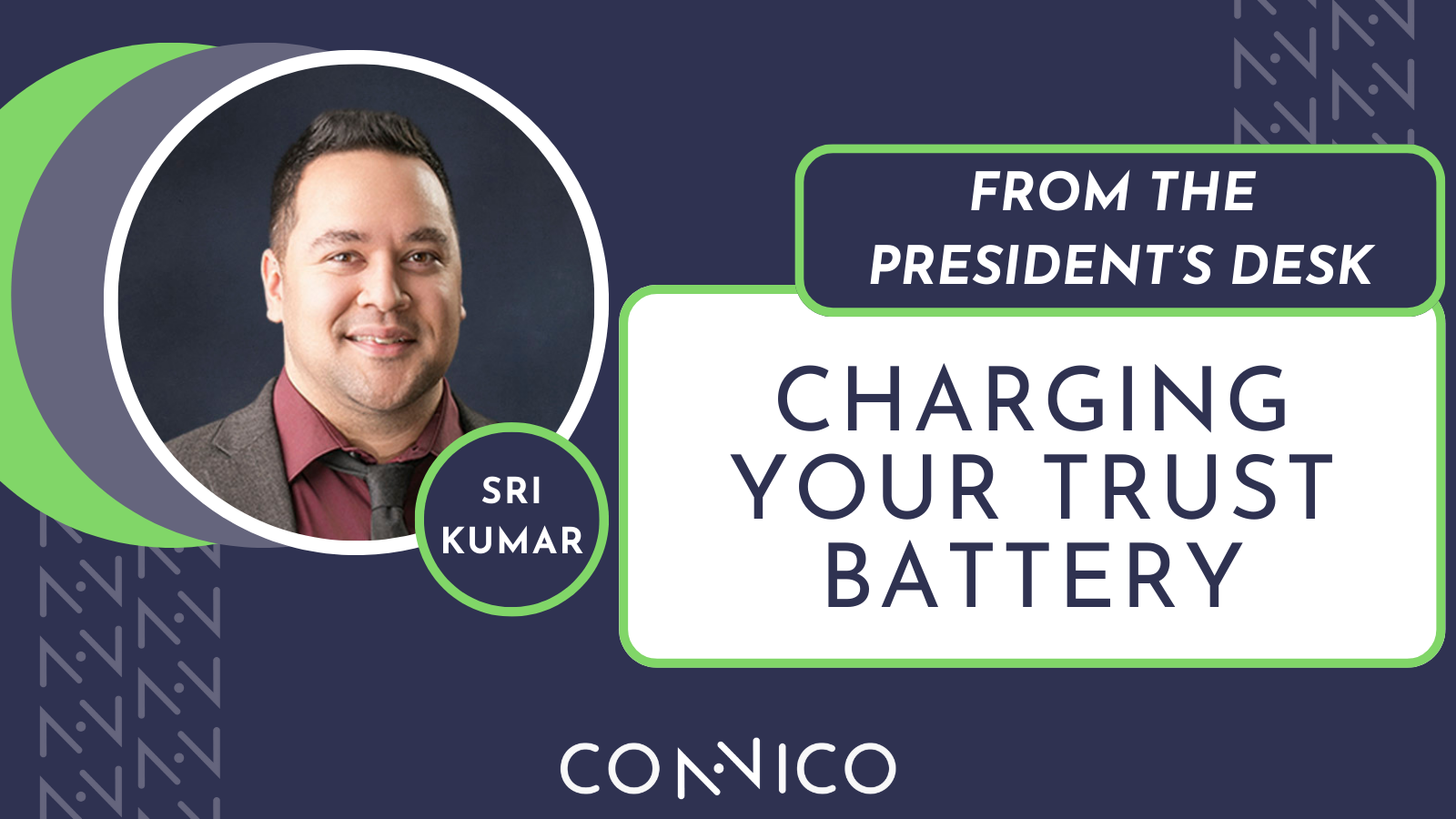From the President’s Desk: Charging your trust battery

If you’ve ever seen that 1999 classic “The Matrix,” you know the plot hinges on machines using humans as an energy source. I won’t give anything else away (I’m strongly anti-spoiler), but as far-fetched as that premise may be, it’s true that the human body runs on electrical signals and impulses. That doesn’t make us machines, but the analogies still apply!
Tobias Lütke, CEO of Shopify (once dubbed the “Amazon of Canada” and now a major player in digital retail frameworks), coined the idea of a “trust battery”: the concept that trust is a reservoir that can be charged or drained, just like a battery.
Lütke explained in an interview with The Knowledge Project that many folks think of trust in terms of all or nothing. Instead, his theory presents trust as a spectrum.
Let’s break it down. If I meet a stranger on the street, I likely trust them 0%. But if a friend introduces me to that same stranger, my trust starts higher, say 40%, because there’s already a connection to contribute to that charge. I might trust my parents 100% and my dentist 75% — it’s different with every person in my orbit.
Lütke makes the same case for the workplace. Let’s say you made it through our hiring process, showed up for your first day, and we pass each other in the hallway. My trust for you probably starts at 50% because I know you’re here for a reason. If we work on a project together, and it has a great outcome, maybe my battery goes up to 55% with you. But if you miss a key deadline, it might drop to 40%.
Here’s the key takeaway: every action and interaction either charges or drains your trust battery, impacting all of our relationships. We all know trust takes time to build. But we don’t often talk about how easily it can erode. That’s what makes the battery analogy so intuitive.
The trust battery metaphor is a powerful way to build trust in your company, but let’s take the concept a step further:
Think about how long a battery takes to charge, especially if it’s something you’re waiting for like your phone. Now think about how, in an instant, it can lose its charge if something is wrong. That’s how quickly a trust battery can be depleted.
In any electrical circuit, a capacitor or battery can only charge as fast as its material properties allow. But what happens when there’s a short circuit? A fault, or a spark? The charge escapes in an instant. The battery is drained. The circuit is dead.
We’ve all seen this play out. When have you experienced trust evaporating in an instant? What was the long process of rebuilding trust like? Here’s the secret to keeping your trust battery, and those around you, fully charged: EVERY action you take should build trust.
When you’re ready to make a decision, especially in heated moments, ask yourself if your actions will reinforce or deplete trust reservoirs. And encourage those around you to do the same! If you focus on this, you’ll always find yourself operating on a full charge.



